Alice: Madness Returns: PhysX Graphics Comparison - Page Three
Note that this is an archived copy of the original article. Please see here for a more detailed explanation.
Looking for other areas of the game to enhance, Spicy Horse and the PhysX team decided to utilize the Clothing component of the APEX toolset. Comprised of five modules covering Clothing, Destruction, Particles, Turbulence and Vegetation, APEX is designed to save developers time and money by allowing programmers to focus on game code and not the development of extra tools and features. Instead, designers and artists can easily use the interface-driven modules to create, generate, and import high-quality game assets and supporting code that adhere to the same collision rules as the aforementioned PhysX Particles.
In Alice’s Victorian London there are numerous washing lines adorned with clothing that are otherwise static when PhysX is disabled. With PhysX enabled the clothes react realistically as Alice passes through, swinging and swaying as they lose momentum following her interaction, and despite its name, the Clothing module can be used to accurately simulate other objects also. Inn this case, curtains in Alice’s home, and loose newspapers blown by the wind down the dilapidated streets.
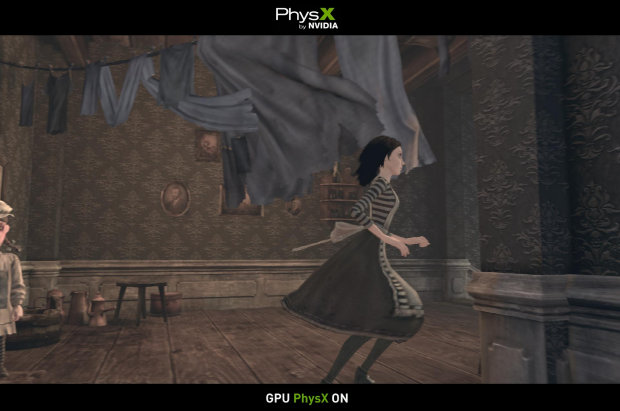
Alice gets a face-full of laundry, the clothing moving realistically as she passes. After Alice has passed the clothing gradually loses momentum and returns to its original position.
By adding these small but subtle details, a consistency now exists where all cloth is animated, not just Alice’s dress, removing a potentially immersion-damaging discrepancy.
APEX Destruction has also been leveraged for Madness Returns, as mentioned earlier. Stone slabs, chessboards and other terrain elements can be accurately smashed apart by melee attacks and Alice’s destructive hobby horse, but how does the game render this destruction when the areas in question are solid objects when PhysX is disabled? Schoemehl explains:
“With APEX Destruction artists can take existing assets and fracture them in the PhysX Lab tool based on a number of parameters. Using this tool they specify how the mesh fractures and tweak parameters to establish material strength and a support structure, and then set up the characters to cause damage by way of impacts. With these relatively simple steps our Destruction effect is created. Not only does APEX Destruction give us this instant flexibility to make these effects quickly, it also brings a great level-of-detail system along with large scale and manageable destruction.” In other words, the developer imports the existing chessboard models and textures, deforms them using the Lab tool, saves them, and then imports them back into the game, saving said developer a lot of time and money.
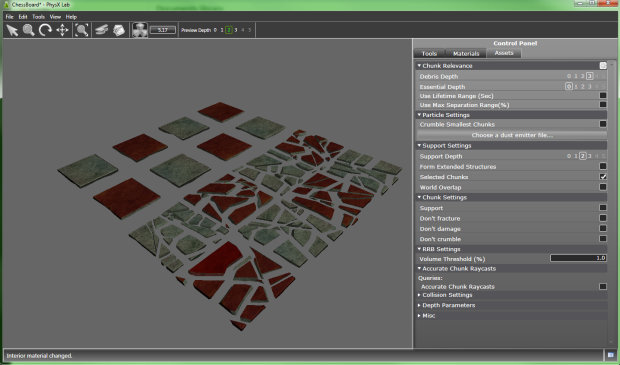
Using PhysX Lab to dictate the properties of the Chessboard and how it reacts when destructive forces are exerted upon it.
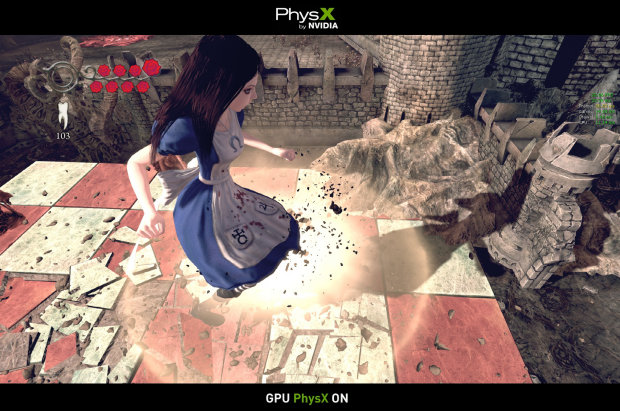
The in-game result. Note how the pieces of the board are able to sit on top of one another once destroyed, making the destruction appear more realistic. Like the particle effects, destruction is completely organic and not animated ahead of time (also known as pre-baking).
Furthermore, destruction is utilized to enhance in-game events that every player, regardless of platform, will see. In these instances extra destructive elements are added, destroyed objects fracture and splinter realistically during their destruction, and smaller destructive elements may be added, such as rocks that tumble down a cliff face as the main boulder hurtles towards the ground.
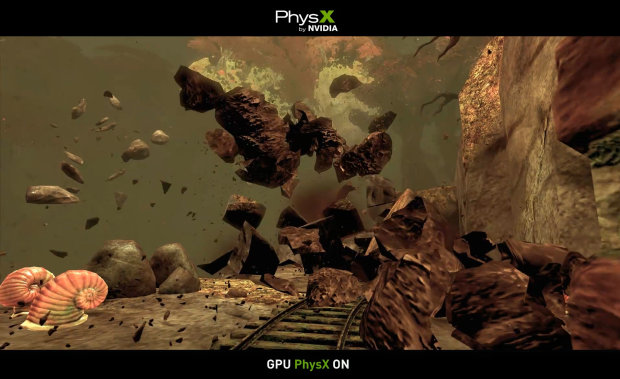
A cliff is destroyed, the rocks reacting and tumbling realistically. With PhysX enabled extra particles and rocks are featured in the scene, making it appear more realistic and action-packed.
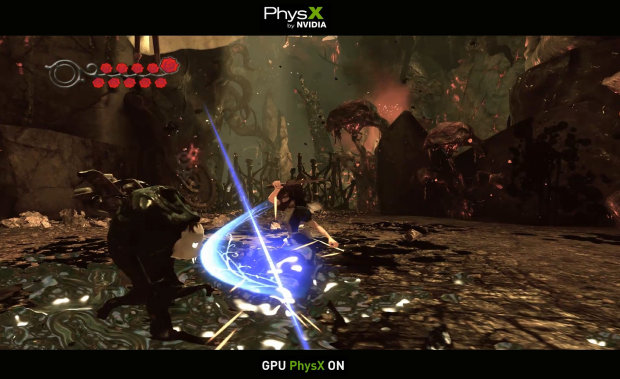
All three technologies combined: Fluid coats the terrain, Particles emanate from Alice’s attacks and fill the air, and Destruction debris tumbles from the cave walls, falling realistically to the ground below.
Developed in concert with Spicy Horse’s developers in Shanghai, the PhysX effects in Alice: Madness Returns push the limits of the realism-led technology further than ever before. In the space of two years, since the introduction of PhysX with EA’s Mirror’s Edge, both the software and hardware have progressed massively, allowing for thousands more particles per scene and the introduction of advanced Smoothed Particle Hydrodynamics, used initially in a more basic manner in Cryostasis: Sleep of Reason.
With the integration of NVIDIA’s PhysX and APEX technologies into Epic Games’ Unreal Development Kit, any developer in the world, indie or otherwise, can make use of it to accelerate and enhance their games. And with Epic’s recent Game Developers Conference demonstration pushing the limits of APEX Clothing and game technology even further, it is an extremely exciting time to be a PC gamer.
We hope you found this article informative. If you have questions or comments please post them in this forum thread. Thanks!
 Previous
Previous
Comments
This comment section is currently disabled. Click here to enable comments and load all Disqus related resources
Please note that by enabling and loading these Disqus resources, you are agreeing to allow everything that comes with a Disqus comment section, including their cookies and all scripting.
This comment section is currently enabled. Click here to disable comments and unload all Disqus related resources
Please note that I have absolutely zero control over this comment section. It is still administered entirely by Nvidia themselves. I have no moderation power whatsoever and don't necessarily endorse any of the comments posted here. In fact, I don't believe this comment section adds much value to the article to begin with but included it only because it existed on the original.